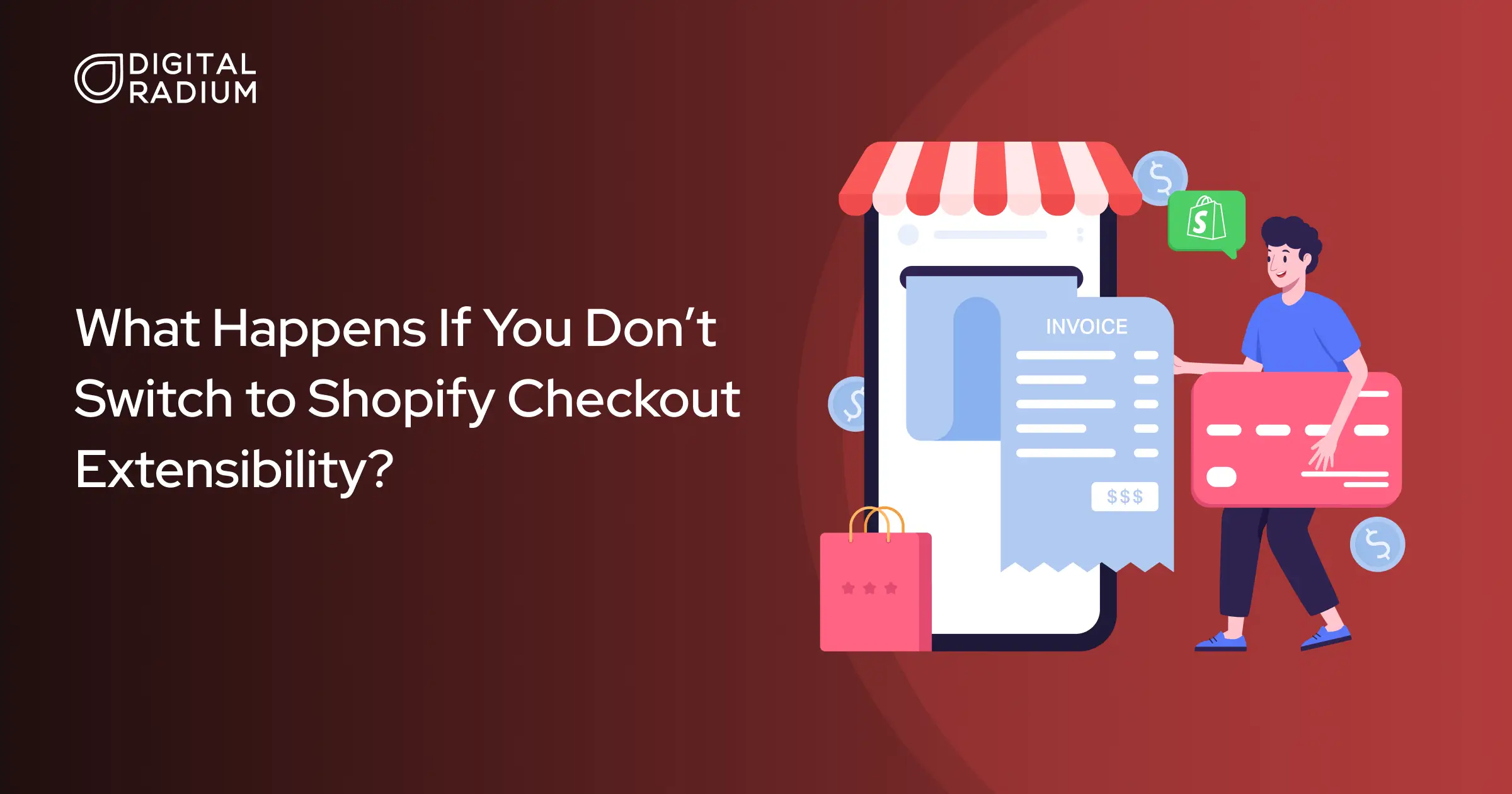When it comes to your Shopify store, user experience and security should always be top priorities. Shopify, as a leading e-commerce platform, has long recognized this and continues to upgrade its services to meet these needs. One of the most significant changes recently introduced is Checkout Extensibility, a new framework designed to make customizing your checkout process easier and more secure. With the deadline for this transition fast approaching, it’s important to understand what could happen if you don’t make the switch. In this blog, we’ll break down the risks and challenges of not upgrading to Checkout Extensibility—and why it’s crucial to act sooner rather than later.
Why Is Shopify Moving Away from checkout.liquid?
For years, Shopify store owners have relied on checkout.liquid to customize their checkout pages. It’s been a great tool, offering flexibility to tailor the checkout experience to match your brand and meet customer needs. However, as e-commerce has grown more complex, so have the demands on the checkout process. Between new security threats, compliance requirements, and the need for more advanced customizations, Shopify decided it was time for an upgrade.
Checkout Extensibility: a more robust, secure, and flexible system
Checkout Extensibility is designed to overcome the limitations of checkout.liquid, offering a more modular and API-driven approach to customization. This means you can create a seamless, personalized checkout experience that works better with Shopify’s broader ecosystem of apps and services. But here’s the catch—if you don’t transition to Checkout Extensibility by January 2025, you could be in for some unpleasant surprises.
What Could Go Wrong If You Don’t Upgrade?
1. Losing Your Checkout Customizations
First off, if you don’t upgrade to Checkout Extensibility, you’re going to lose your current checkout customizations. After the deadline, Shopify will lock the checkout.liquid file, meaning you won’t be able to make any changes. If your store depends on specific customizations for a unique checkout experience, this could result in a more generic process that doesn’t resonate with your customers. You could lose custom elements like branding, upsells, or unique checkout flows, making your store’s checkout less engaging and potentially harming your conversion rates.
2. Increased Security Vulnerabilities
Security is a big deal in e-commerce. With cyberattacks and data breaches becoming more sophisticated, outdated systems are often the first targets. If you stick with checkout.liquid, you’re leaving your store exposed to these risks. Shopify has made it clear that checkout.liquid will no longer receive updates or security patches, meaning any new vulnerabilities will go unaddressed. This not only puts your store at risk but also endangers your customers’ sensitive data, potentially leading to a loss of trust—and that’s not something you can afford.
3. Compliance and Legal Challenges
Beyond security risks, not upgrading could also land you in hot water with industry regulations. Compliance with Payment Card Industry Data Security Standards (PCI DSS) is crucial for any business handling credit card transactions. As regulations evolve, older systems like checkout.liquid may no longer meet these standards. Falling out of compliance could mean hefty fines, legal headaches, and even losing the ability to process payments through certain gateways. Checkout Extensibility, on the other hand, is built to meet the latest compliance standards, keeping your store in good standing with regulators.
4. Operational and Financial Setbacks
Delaying your upgrade to Checkout Extensibility could lead to some operational hiccups as well. Shopify has hinted that stores that have not upgraded might face delays in payouts due to additional fraud checks. This could disrupt your cash flow and make it harder to manage your day-to-day operations. Additionally, without the ability to tweak or deactivate payment gateways, you might be stuck with higher transaction fees or unable to offer the payment options your customers prefer. These issues could hit your bottom line hard.
The Automatic Transition Is Not a Safe Bet
You might be thinking, “I’ll just wait until Shopify automatically transitions my checkout system in January 2025.” But that’s a risky strategy. When Shopify makes this switch, any existing customizations will be stripped away, leaving you with a basic, uncustomized checkout process. If your store relies on these custom features, their sudden loss could disrupt the user experience, leading to confusion and frustration for your customers. This is especially concerning for stores with high sales volumes or complex checkout needs, where even a slight dip in conversion rates could have a significant financial impact.
Why You Shouldn’t Wait to Upgrade
Given all these risks, the best move is to transition to Checkout Extensibility as soon as possible. Shopify offers tools and resources to help with this process, including a customization report that highlights areas of your current checkout that need updating. By upgrading now, you can ensure your checkout process remains secure, compliant, and perfectly tailored to your business’s needs.
Final Thoughts
Upgrading to Checkout Extensibility is much more than just a way to access Shopify’s latest features. It’s a crucial step in safeguarding your business. Failure to make the switch could result in the loss of important customizations, leaving your store vulnerable to security risks, and exposing you to compliance issues that may have serious financial and operational consequences.
Don’t take the risk of waiting until it’s too late. Contact a Leading Shopify Development Company, such as ours in St. Louis. With our extensive experience in Shopify, we can seamlessly manage the transition from checkout.liquid to extensibility. Let’s schedule a meeting over coffee to explore what we can do for your store.
